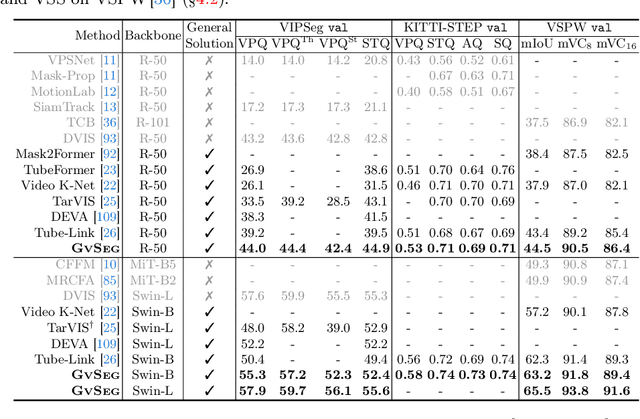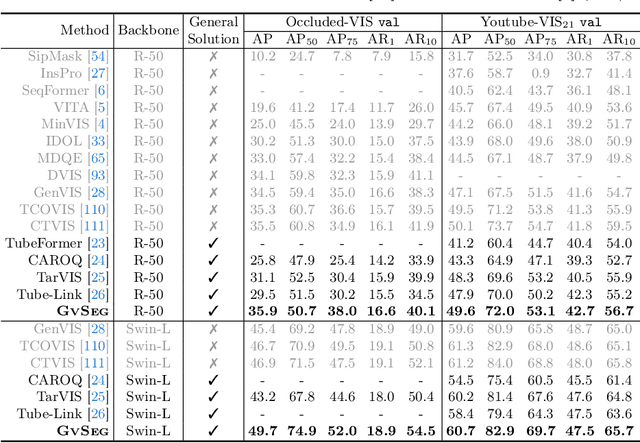Ruijie Quan
Dynamic Experts Search: Enhancing Reasoning in Mixture-of-Experts LLMs at Test Time
Sep 26, 2025Abstract:Test-Time Scaling (TTS) enhances the reasoning ability of large language models (LLMs) by allocating additional computation during inference. However, existing approaches primarily rely on output-level sampling while overlooking the role of model architecture. In mainstream Mixture-of-Experts (MoE) LLMs, we observe that varying the number of activated experts yields complementary solution sets with stable accuracy, revealing a new and underexplored source of diversity. Motivated by this observation, we propose Dynamic Experts Search (DES), a TTS strategy that elevates expert activation into a controllable dimension of the search space. DES integrates two key components: (1) Dynamic MoE, which enables direct control of expert counts during inference to generate diverse reasoning trajectories without additional cost; and (2) Expert Configuration Inheritance, which preserves consistent expert counts within a reasoning path while varying them across runs, thereby balancing stability and diversity throughout the search. Extensive experiments across MoE architectures, verifiers and reasoning benchmarks (i.e., math, code and knowledge) demonstrate that DES reliably outperforms TTS baselines, enhancing accuracy and stability without additional cost. These results highlight DES as a practical and scalable form of architecture-aware TTS, illustrating how structural flexibility in modern LLMs can advance reasoning.
Insert Anything: Image Insertion via In-Context Editing in DiT
Apr 21, 2025Abstract:This work presents Insert Anything, a unified framework for reference-based image insertion that seamlessly integrates objects from reference images into target scenes under flexible, user-specified control guidance. Instead of training separate models for individual tasks, our approach is trained once on our new AnyInsertion dataset--comprising 120K prompt-image pairs covering diverse tasks such as person, object, and garment insertion--and effortlessly generalizes to a wide range of insertion scenarios. Such a challenging setting requires capturing both identity features and fine-grained details, while allowing versatile local adaptations in style, color, and texture. To this end, we propose to leverage the multimodal attention of the Diffusion Transformer (DiT) to support both mask- and text-guided editing. Furthermore, we introduce an in-context editing mechanism that treats the reference image as contextual information, employing two prompting strategies to harmonize the inserted elements with the target scene while faithfully preserving their distinctive features. Extensive experiments on AnyInsertion, DreamBooth, and VTON-HD benchmarks demonstrate that our method consistently outperforms existing alternatives, underscoring its great potential in real-world applications such as creative content generation, virtual try-on, and scene composition.
TarPro: Targeted Protection against Malicious Image Editing
Mar 18, 2025Abstract:The rapid advancement of image editing techniques has raised concerns about their misuse for generating Not-Safe-for-Work (NSFW) content. This necessitates a targeted protection mechanism that blocks malicious edits while preserving normal editability. However, existing protection methods fail to achieve this balance, as they indiscriminately disrupt all edits while still allowing some harmful content to be generated. To address this, we propose TarPro, a targeted protection framework that prevents malicious edits while maintaining benign modifications. TarPro achieves this through a semantic-aware constraint that only disrupts malicious content and a lightweight perturbation generator that produces a more stable, imperceptible, and robust perturbation for image protection. Extensive experiments demonstrate that TarPro surpasses existing methods, achieving a high protection efficacy while ensuring minimal impact on normal edits. Our results highlight TarPro as a practical solution for secure and controlled image editing.
BrainGuard: Privacy-Preserving Multisubject Image Reconstructions from Brain Activities
Jan 24, 2025



Abstract:Reconstructing perceived images from human brain activity forms a crucial link between human and machine learning through Brain-Computer Interfaces. Early methods primarily focused on training separate models for each individual to account for individual variability in brain activity, overlooking valuable cross-subject commonalities. Recent advancements have explored multisubject methods, but these approaches face significant challenges, particularly in data privacy and effectively managing individual variability. To overcome these challenges, we introduce BrainGuard, a privacy-preserving collaborative training framework designed to enhance image reconstruction from multisubject fMRI data while safeguarding individual privacy. BrainGuard employs a collaborative global-local architecture where individual models are trained on each subject's local data and operate in conjunction with a shared global model that captures and leverages cross-subject patterns. This architecture eliminates the need to aggregate fMRI data across subjects, thereby ensuring privacy preservation. To tackle the complexity of fMRI data, BrainGuard integrates a hybrid synchronization strategy, enabling individual models to dynamically incorporate parameters from the global model. By establishing a secure and collaborative training environment, BrainGuard not only protects sensitive brain data but also improves the image reconstructions accuracy. Extensive experiments demonstrate that BrainGuard sets a new benchmark in both high-level and low-level metrics, advancing the state-of-the-art in brain decoding through its innovative design.
Autonomous LLM-Enhanced Adversarial Attack for Text-to-Motion
Aug 01, 2024Abstract:Human motion generation driven by deep generative models has enabled compelling applications, but the ability of text-to-motion (T2M) models to produce realistic motions from text prompts raises security concerns if exploited maliciously. Despite growing interest in T2M, few methods focus on safeguarding these models against adversarial attacks, with existing work on text-to-image models proving insufficient for the unique motion domain. In the paper, we propose ALERT-Motion, an autonomous framework leveraging large language models (LLMs) to craft targeted adversarial attacks against black-box T2M models. Unlike prior methods modifying prompts through predefined rules, ALERT-Motion uses LLMs' knowledge of human motion to autonomously generate subtle yet powerful adversarial text descriptions. It comprises two key modules: an adaptive dispatching module that constructs an LLM-based agent to iteratively refine and search for adversarial prompts; and a multimodal information contrastive module that extracts semantically relevant motion information to guide the agent's search. Through this LLM-driven approach, ALERT-Motion crafts adversarial prompts querying victim models to produce outputs closely matching targeted motions, while avoiding obvious perturbations. Evaluations across popular T2M models demonstrate ALERT-Motion's superiority over previous methods, achieving higher attack success rates with stealthier adversarial prompts. This pioneering work on T2M adversarial attacks highlights the urgency of developing defensive measures as motion generation technology advances, urging further research into safe and responsible deployment.
Shape2Scene: 3D Scene Representation Learning Through Pre-training on Shape Data
Jul 14, 2024Abstract:Current 3D self-supervised learning methods of 3D scenes face a data desert issue, resulting from the time-consuming and expensive collecting process of 3D scene data. Conversely, 3D shape datasets are easier to collect. Despite this, existing pre-training strategies on shape data offer limited potential for 3D scene understanding due to significant disparities in point quantities. To tackle these challenges, we propose Shape2Scene (S2S), a novel method that learns representations of large-scale 3D scenes from 3D shape data. We first design multiscale and high-resolution backbones for shape and scene level 3D tasks, i.e., MH-P (point-based) and MH-V (voxel-based). MH-P/V establishes direct paths to highresolution features that capture deep semantic information across multiple scales. This pivotal nature makes them suitable for a wide range of 3D downstream tasks that tightly rely on high-resolution features. We then employ a Shape-to-Scene strategy (S2SS) to amalgamate points from various shapes, creating a random pseudo scene (comprising multiple objects) for training data, mitigating disparities between shapes and scenes. Finally, a point-point contrastive loss (PPC) is applied for the pre-training of MH-P/V. In PPC, the inherent correspondence (i.e., point pairs) is naturally obtained in S2SS. Extensive experiments have demonstrated the transferability of 3D representations learned by MH-P/V across shape-level and scene-level 3D tasks. MH-P achieves notable performance on well-known point cloud datasets (93.8% OA on ScanObjectNN and 87.6% instance mIoU on ShapeNetPart). MH-V also achieves promising performance in 3D semantic segmentation and 3D object detection.
General and Task-Oriented Video Segmentation
Jul 09, 2024



Abstract:We present GvSeg, a general video segmentation framework for addressing four different video segmentation tasks (i.e., instance, semantic, panoptic, and exemplar-guided) while maintaining an identical architectural design. Currently, there is a trend towards developing general video segmentation solutions that can be applied across multiple tasks. This streamlines research endeavors and simplifies deployment. However, such a highly homogenized framework in current design, where each element maintains uniformity, could overlook the inherent diversity among different tasks and lead to suboptimal performance. To tackle this, GvSeg: i) provides a holistic disentanglement and modeling for segment targets, thoroughly examining them from the perspective of appearance, position, and shape, and on this basis, ii) reformulates the query initialization, matching and sampling strategies in alignment with the task-specific requirement. These architecture-agnostic innovations empower GvSeg to effectively address each unique task by accommodating the specific properties that characterize them. Extensive experiments on seven gold-standard benchmark datasets demonstrate that GvSeg surpasses all existing specialized/general solutions by a significant margin on four different video segmentation tasks.
Neural Interaction Energy for Multi-Agent Trajectory Prediction
Apr 25, 2024Abstract:Maintaining temporal stability is crucial in multi-agent trajectory prediction. Insufficient regularization to uphold this stability often results in fluctuations in kinematic states, leading to inconsistent predictions and the amplification of errors. In this study, we introduce a framework called Multi-Agent Trajectory prediction via neural interaction Energy (MATE). This framework assesses the interactive motion of agents by employing neural interaction energy, which captures the dynamics of interactions and illustrates their influence on the future trajectories of agents. To bolster temporal stability, we introduce two constraints: inter-agent interaction constraint and intra-agent motion constraint. These constraints work together to ensure temporal stability at both the system and agent levels, effectively mitigating prediction fluctuations inherent in multi-agent systems. Comparative evaluations against previous methods on four diverse datasets highlight the superior prediction accuracy and generalization capabilities of our model.
AudioScenic: Audio-Driven Video Scene Editing
Apr 25, 2024Abstract:Audio-driven visual scene editing endeavors to manipulate the visual background while leaving the foreground content unchanged, according to the given audio signals. Unlike current efforts focusing primarily on image editing, audio-driven video scene editing has not been extensively addressed. In this paper, we introduce AudioScenic, an audio-driven framework designed for video scene editing. AudioScenic integrates audio semantics into the visual scene through a temporal-aware audio semantic injection process. As our focus is on background editing, we further introduce a SceneMasker module, which maintains the integrity of the foreground content during the editing process. AudioScenic exploits the inherent properties of audio, namely, audio magnitude and frequency, to guide the editing process, aiming to control the temporal dynamics and enhance the temporal consistency. First, we present an audio Magnitude Modulator module that adjusts the temporal dynamics of the scene in response to changes in audio magnitude, enhancing the visual dynamics. Second, the audio Frequency Fuser module is designed to ensure temporal consistency by aligning the frequency of the audio with the dynamics of the video scenes, thus improving the overall temporal coherence of the edited videos. These integrated features enable AudioScenic to not only enhance visual diversity but also maintain temporal consistency throughout the video. We present a new metric named temporal score for more comprehensive validation of temporal consistency. We demonstrate substantial advancements of AudioScenic over competing methods on DAVIS and Audioset datasets.
Clustering for Protein Representation Learning
Mar 30, 2024



Abstract:Protein representation learning is a challenging task that aims to capture the structure and function of proteins from their amino acid sequences. Previous methods largely ignored the fact that not all amino acids are equally important for protein folding and activity. In this article, we propose a neural clustering framework that can automatically discover the critical components of a protein by considering both its primary and tertiary structure information. Our framework treats a protein as a graph, where each node represents an amino acid and each edge represents a spatial or sequential connection between amino acids. We then apply an iterative clustering strategy to group the nodes into clusters based on their 1D and 3D positions and assign scores to each cluster. We select the highest-scoring clusters and use their medoid nodes for the next iteration of clustering, until we obtain a hierarchical and informative representation of the protein. We evaluate on four protein-related tasks: protein fold classification, enzyme reaction classification, gene ontology term prediction, and enzyme commission number prediction. Experimental results demonstrate that our method achieves state-of-the-art performance.
 Add to Chrome
Add to Chrome Add to Firefox
Add to Firefox Add to Edge
Add to Edge